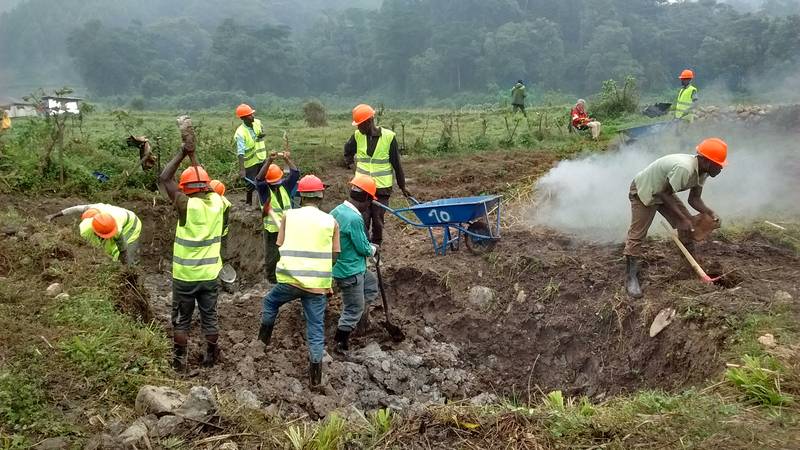February 28th 2020, Opening of the alluvial pit #1
The first alluvial pit #1 is opened at this location.
In the context of alluvial gold exploration, “pitting” and “trenching” are two common methods used to investigate potential gold deposits. Here’s what they mean:
Pitting
Pitting involves digging small holes or pits in areas where there is a suspicion that alluvial (placer) gold might be present. These pits can vary in size but are typically shallow and narrow, often just large enough for one person to work within.
Objective: The primary goal of pitting is to collect samples from different depths and locations to determine the presence or absence of gold.
Process:
- A small hole (pit) is dug using hand tools like shovels, pickaxes, or even backhoes for larger pits.
- Samples are collected at various intervals as you dig deeper into the soil layers. These samples can then be panned to check for visible gold particles and/or sent to a lab for assaying.
Trenching
Trenching, on the other hand, involves digging longer, narrower trenches across an area suspected of containing alluvial gold deposits.
Objective: The aim is similar to pitting but over a larger scale. Trenching helps in understanding the distribution and concentration of gold within a broader section of land.
- Process:
- A trench (usually several meters long) is dug using machinery like excavators or bulldozers, depending on the size required.
- Samples are collected at regular intervals along both sides and bottoms of these trenches. This provides more comprehensive data about gold distribution across a larger area.
- Process:
“February 28th 2020, Opening of the alluvial pit #1” This indicates that on February 28th, an initial exploratory hole (pit) was dug at this specific location to start investigating for gold. The opening of “alluvial pit #1” suggests it is likely one among several planned pits or trenches in a systematic exploration program.
By using these methods together with other geological and geochemical techniques, explorers can gather valuable information about the potential presence and distribution of alluvial gold deposits within an area before deciding whether to proceed with more extensive mining operations.
